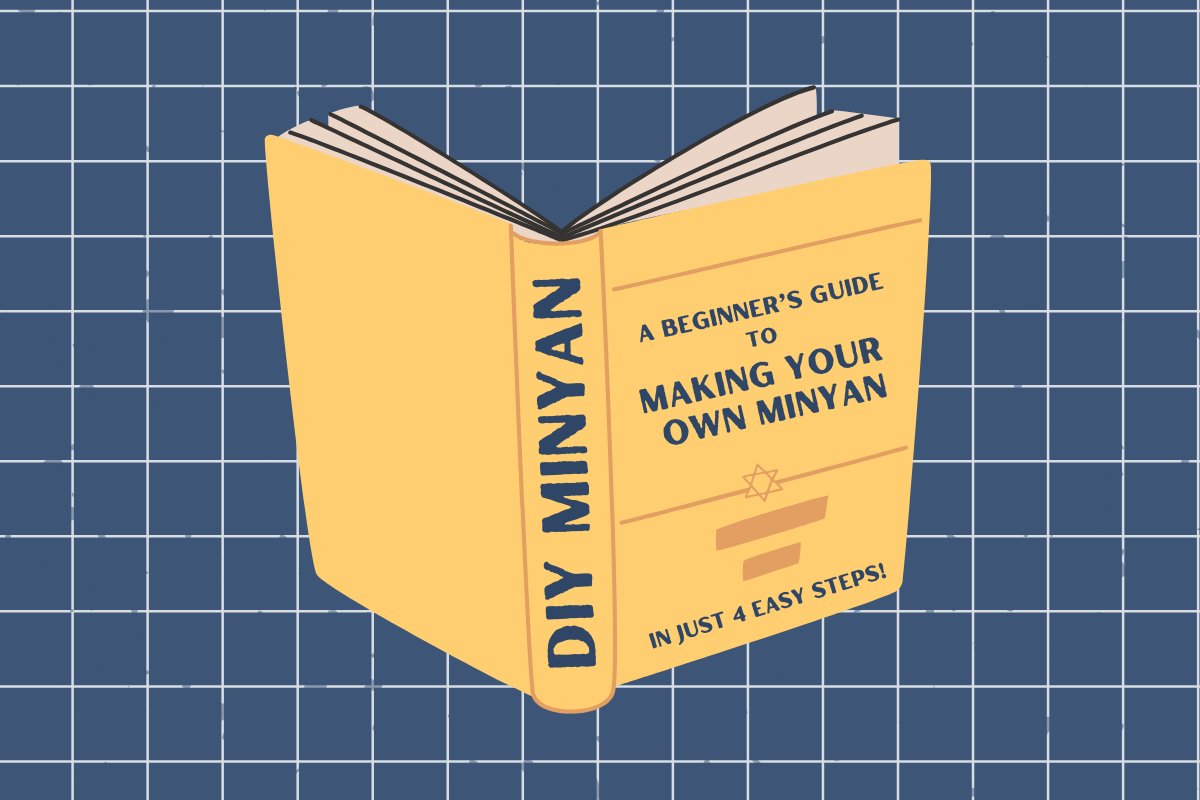When I moved to New York City after graduating college, two Jewish things surprised me: how easily I met new Jewish friends, and how challenging it was to find a Jewish community I clicked with. Until starting my adult post-grad life, I never realized the distinction between having friends and having a community. As much as I loved making new friends, I missed having people to join together with for Jewish singing and rituals. I missed talking to people outside my immediate circle who had similar values and interests. I tried exploring a few local congregations, but couldn’t find anything that struck the right balance between “close to my apartment” and “finding my people.” So I decided that I would start my own minyan and bring people together myself.
Getting started
I highly recommend finding a co-conspirator (or several!) in your minyan planning. It’s a lot of work, and it helps to have a friend to divide and conquer with.
Luckily for me, my friend Maya didn’t take much convincing. We’d discussed previously how we missed our respective college Jewish communities and were struggling to find anything in our immediate community that clicked. We also had some experience that made the process less overwhelming: Maya was a songleader at her college Hillel, and is a longtime Jewish summer camp staff member and Jewish educator. I was co-president of my college’s Jewish student group and find joy in spreadsheets and coordinating people. All of that specific experience certainly isn’t necessary to start your own minyan, but it does help to know your strengths beforehand so you can use them to your advantage.
Once you have someone else on board, you need a vision. In order to find like minded people, after all, you have to establish what you want to have on everyone’s mind. I recommend writing up your hopes for your new community, both logistical and spiritual: When and how often do you want to meet? Who do you hope to include? What kind of service, singing or community activities do you want to take part in together?
Maya and I wanted to find other young people, so we decided to call ourselves a 20s and 30s minyan. We knew we wanted to build an egalitarian minyan and we wanted it to feel nondenominational, queer-inclusive and welcoming to people from a wide range of Jewish backgrounds. For now, we meet once a month. It was important to both of us to foster an environment for traditional Jewish singing alongside energetic and joyful discussion. Our minyan is only a couple months old, but we hope that as our community grows and strengthens, we’ll be able to have different people involved in different aspects of leadership.
Finding your people
You have a vision and a plan — now you need to find the people who will hopefully become your community! Maya and I quickly realized that we would need to expand beyond our own circles of friends to build something stable — we didn’t want our friends to feel obligated to join every time, and part of our dream was to meet new Jewish young adults who were also interested in community-building. Minyans traditionally consist of at least ten people, so while we did invite our friends, we also decided to cast a wider net using the Hey Alma classifieds. Once we gathered up some interested people in a WhatsApp group, we polled everyone on a good date to start.
Living in New York City, we are lucky to have a lot of like minded Jewish people nearby. Once we put out our ad, we immediately got about 25 responses. Seeing the Hey Alma ad responses was both energizing and reassuring — I had Instagram mutuals with the majority of people we met on Hey Alma (thank you Jewish Geography and Liberal Arts School Geography!). Still, we made sure to have some back-and-forth conversation with people before adding them to the WhatsApp group we made for the minyan. This helped reassure us that everyone was on board with our vision and seemed to be who they said they were.
Depending on where you live, it may be more challenging to find as many people to join your minyan. I do genuinely recommend using the Hey Alma classifieds as a starting place, as well as inviting any Jewish friends and friends-of-friends in your circle. Eventually, people will want to bring their friends, and you’ll achieve a certain degree of natural growth.
The nitty gritty
Here are some things you need for a minyan: a prayer book or a way to share the words you’ll be singing. A space to hold your minyan. Some basic supplies, like plates and cups and name tags. And in my opinion, it’s not a Jewish gathering without food.
Maya and I are extremely extra and decided to make a siddur from scratch on Canva and then print it out at Staples. We did this because it allowed us to make something totally customized, but it’s not at all necessary. Websites like Sefaria, Zemirot Database, and My Jewish Learning have the text of major Jewish prayers, so we scaffolded our siddurs together using that text. There are also lots of siddurs from a wide range of Jewish denominations available for free as PDFs. Depending on your Shabbat customs, you might not need printed siddurs at all — you could stream words onto a TV or projector or send people a link to look at on their phones.
So far it has worked to host our minyan in either my or Maya’s small Manhattan living rooms, but if and when we outgrow this space we will have to reevaluate. We might try hosting in the park when the weather is nice or asking community centers in our neighborhood if they would be willing to donate space. Hosting in a more public space would have an advantage of more privacy for hosts and lower the barrier to entry for people who don’t want to go to a stranger’s apartment. So far, we have felt safe and comfortable hosting in our homes because we talk to everyone we invite beforehand and, like I mentioned earlier, usually have mutual friends.
We decided to host our minyan as a vegetarian potluck to simplify at least a certain layer of kashrut and to offset the cost of hosting and feeding people by making it a collaborative effort. We also have a system where people can label their food with a sticker: pink means cooked in a non-kosher kitchen, green means cooked in a vegetarian kitchen and yellow means cooked in a kosher kitchen. This allows guests to know what will be comfortable for them to eat in a hopefully nonjudgmental way.
Speaking of the costs of hosting, we’ve found OneTable to be an incredible resource. OneTable allows Jewish people ages 21-39 to receive $10 a participant for hosting Shabbat dinners on Friday night as long as dinners are registered in advance and people RSVP. We’ve used OneTable funding to buy groceries and supplies, and I would highly recommend anyone in that age range to take advantage of this resource.
Pulling it all together
The beauty of hosting your own minyan is that you can make it however you want it to be. Traditional? Non-traditional? Silly? Serious? Some mix of all of the above? Whatever makes you happy and connects you to your Jewish identity is perfect! When it comes time for your first minyan, you might be nervous, especially if you aren’t familiar with leading Jewish services. But remember, everyone is there because they want to find a community just as much as you do.
If you’re in the New York City area and are interested in joining this minyan, reach out to Naomi via DM on Twitter (@naomihorn22) or Instagram (@naomi.horn) for more information.



